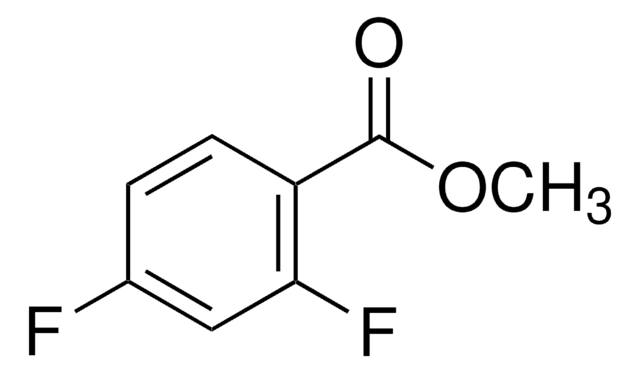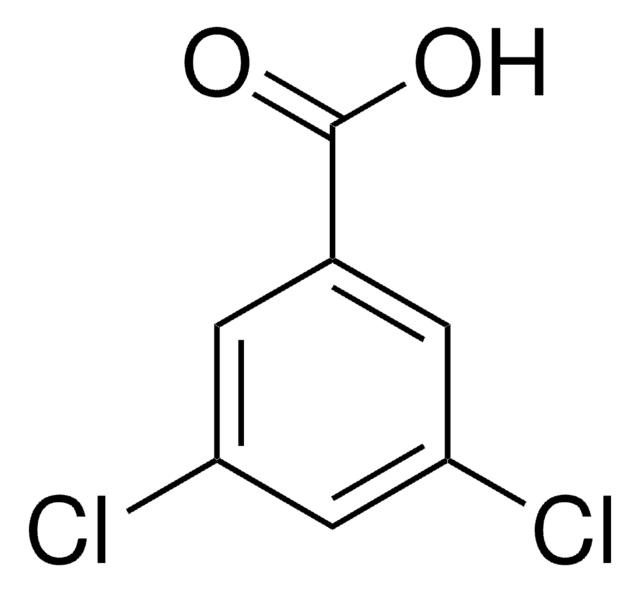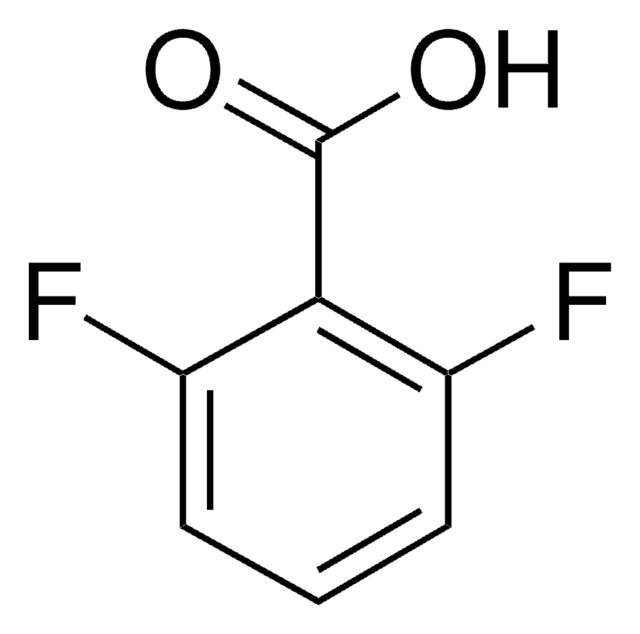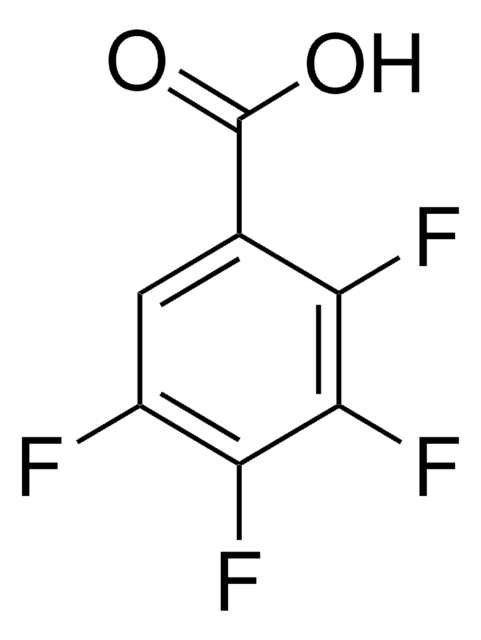All Photos(1)
About This Item
Linear Formula:
F2C6H3CO2H
CAS Number:
Molecular Weight:
158.10
EC Number:
MDL number:
UNSPSC Code:
12352100
PubChem Substance ID:
NACRES:
NA.22
Recommended Products
Assay
98%
mp
188-190 °C (lit.)
SMILES string
OC(=O)c1ccc(F)cc1F
InChI
1S/C7H4F2O2/c8-4-1-2-5(7(10)11)6(9)3-4/h1-3H,(H,10,11)
InChI key
NJYBIFYEWYWYAN-UHFFFAOYSA-N
General description
Molecular conformation, vibrational and electronic transition analysis of 2,4-difluorobenzoic acid has been investigated by experimental techniques (FT-IR, FT-Raman and UV) and quantum chemical calculations.
Signal Word
Warning
Hazard Statements
Precautionary Statements
Hazard Classifications
Eye Irrit. 2 - Skin Irrit. 2 - STOT SE 3
Target Organs
Respiratory system
Storage Class Code
11 - Combustible Solids
WGK
WGK 3
Flash Point(F)
Not applicable
Flash Point(C)
Not applicable
Personal Protective Equipment
dust mask type N95 (US), Eyeshields, Gloves
Certificates of Analysis (COA)
Search for Certificates of Analysis (COA) by entering the products Lot/Batch Number. Lot and Batch Numbers can be found on a product’s label following the words ‘Lot’ or ‘Batch’.
Already Own This Product?
Find documentation for the products that you have recently purchased in the Document Library.
Customers Also Viewed
Mehmet Karabacak et al.
Spectrochimica acta. Part A, Molecular and biomolecular spectroscopy, 79(5), 1511-1519 (2011-06-08)
In this study, the molecular conformation, vibrational and electronic transition analysis of 2,3-difluorobenzoic acid and 2,4-difluorobenzoic acid (C7H4F2O2) were presented using experimental techniques (FT-IR, FT-Raman and UV) and quantum chemical calculations. FT-IR and FT-Raman spectra in solid state were recorded
Jiaqing Guo et al.
Spectrochimica acta. Part A, Molecular and biomolecular spectroscopy, 240, 118592-118592 (2020-07-03)
Low-toxic and environmentally friendly carbon dots (CDs) have been extensively applied in various fields. CDs usually demonstrate excellent selectivity and high sensitivity, especially in ion detection. However, the most commonly used CDs are excited by ultraviolet (UV) light and emit
Our team of scientists has experience in all areas of research including Life Science, Material Science, Chemical Synthesis, Chromatography, Analytical and many others.
Contact Technical Service











